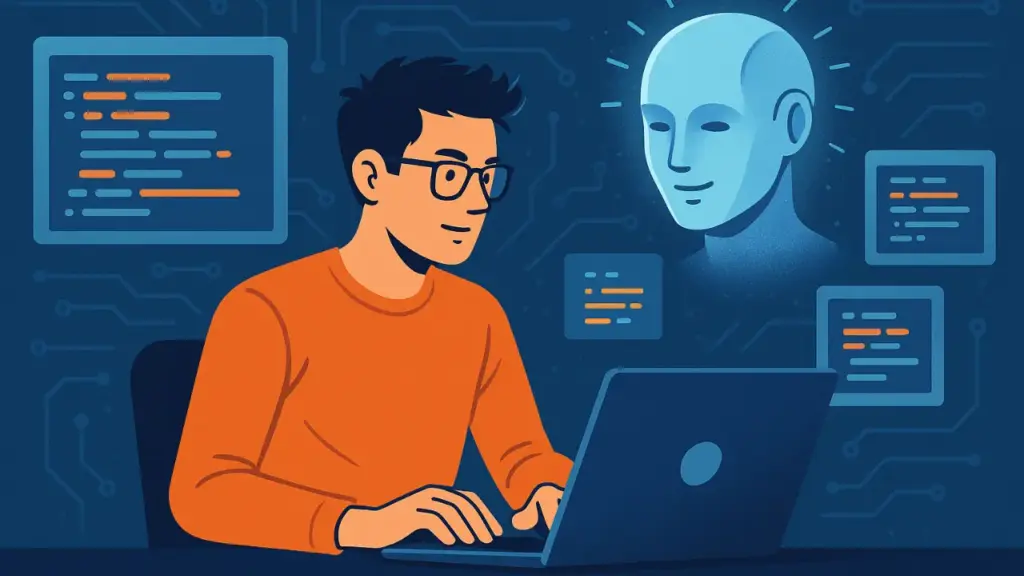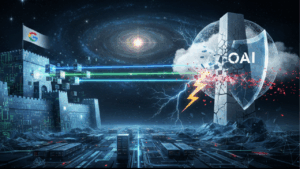Introduction
Remember when tech executives promised that AI would replace developers by 2025?
Well, they’re changing their tune.
Sam Altman, CEO of OpenAI, now says he is “less interested in replacing coders” and wants to make developers 10x more productive instead.
Even Bill Gates admits software engineering is too complex for AI to handle alone.
The hype cycle is ending.
The reality?
AI is a tool, not a replacement.
This shift confirms what many seasoned developers have believed all along.
Let’s dive into how the tech industry’s thinking has evolved — and what it means for the future of software development.
The Big Pivot — From Replacement to Amplification
Just a few months ago, tech CEOs were confident.
They said developers would become obsolete by 2025.
Today, those same voices are preaching a different message.
Sam Altman now emphasizes enhancing developers’ capabilities over replacing them.
He recently told an interviewer he’s “more focused on making coders 10x more productive” rather than achieving full automation.
Bill Gates supports this view.
He points out that software development involves layers of creativity and critical thinking that AI alone cannot replicate.
The narrative is clear:
AI won’t wipe out development jobs.
It will transform how developers work — for the better.
Déjà Vu — We’ve Seen This Hype Cycle Before
For those who’ve been around long enough, this isn’t new.
Every time a disruptive technology emerges, the same pattern unfolds.
First comes the hype:
Wild claims that the new tech will replace human workers.
Then comes reality:
Technology augments human skills instead of replacing them.
Over 25 years, I’ve witnessed it with cloud computing, mobile apps, machine learning, and now AI.
Each time, the experts predict mass extinction of roles.
Each time, the reality proves otherwise.
AI is following the same curve.
Initial fear and overpromising give way to practical innovation and collaboration.
Developers who understand this cycle stay ahead — and thrive.
AI’s Real Role — Partner, Not Replacement
AI is proving itself as a partner for developers, not their enemy.
Instead of eliminating jobs, it automates the repetitive, tedious parts of coding.
Tasks like boilerplate code generation, basic bug detection, and documentation are becoming faster and easier.
This frees developers to focus on higher-value tasks — solving complex problems, designing systems, and building unique user experiences.
Real-world results already show a 2-3x increase in productivity.
Sam Altman even predicts 20-30x gains as AI tools mature and integrate deeper into workflows.
Importantly, these productivity boosts don’t mean fewer jobs.
They mean better quality work, faster delivery times, and more room for creativity.
Developers who embrace AI tools now will set themselves apart in the coming years.
The key is to use AI as an assistant — not a crutch.
Microsoft’s Smart Play — Winning Without Burning Billions
While OpenAI and others race to develop the latest frontier models, Microsoft is playing a different game.
Their AI strategy is smart, calculated, and historically familiar.
Microsoft is letting OpenAI burn through billions in R&D while they watch closely.
Then, they apply proven models to real customer needs.
This approach saves massive resources while delivering practical solutions.
Mustafa Suleyman, Microsoft’s AI Chief, explained their approach:
“Our strategy is to play a very tight second, given the capital intensiveness of these models.”
By trailing leaders by 3-6 months, Microsoft gets the best of both worlds.
They avoid costly dead ends while focusing on what the market actually wants.
This mirrors Microsoft’s past strategies.
They weren’t first with operating systems, office software, or cloud computing.
But they often won by making the technology accessible, affordable, and reliable.
Now, they’re applying that same winning formula to AI.
The Broader Industry Shift
Microsoft isn’t the only tech giant taking this cautious, smart approach.
Companies like AWS, Alibaba, and DeepSeek are following similar strategies.
Instead of trying to be the very first with risky AI innovations, they’re watching, learning, and optimizing.
They’re betting on practical applications over flashy headlines.
This strategy acknowledges a simple truth:
In tech, being first isn’t always being best.
Often, it’s better to be second — but smarter.
Meanwhile, companies still chasing the dream of full developer replacement are falling behind.
The winners are those that empower developers with better tools, not those who attempt to replace them.
In today’s market, it’s clear:
Empowered developers drive real innovation.

Conclusion
The tech industry is waking up to a truth developers have known for years:
AI is a tool for empowerment, not a replacement for creativity and problem-solving.
Sam Altman’s pivot reflects a broader realization across the industry.
Instead of replacing developers, AI will help them reach new heights of productivity and innovation.
Bill Gates’ acknowledgment of software’s complexity further cements this reality.
As companies like Microsoft, AWS, Alibaba, and DeepSeek show, smart adoption beats reckless innovation.
Building practical, user-friendly AI tools for developers will shape the next generation of technology.
For developers and tech leaders alike, now is the time to adapt.
Use AI to eliminate low-value tasks and double down on creativity, design, and strategic thinking.
At StartupHakk, we believe the future belongs to those who embrace tools like AI thoughtfully — not fearfully.
The smartest developers are not fighting AI; they’re using it to build better, faster, and smarter.




